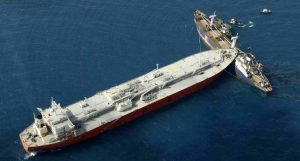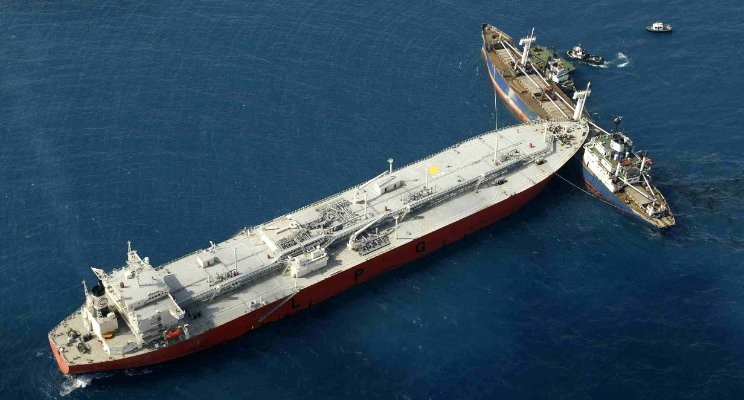The vastness of the world’s oceans and waterways is mirrored by the complexity and dangers of maritime navigation. Despite advancements in technology and safety standards, ship accidents, collisions, and contacts remain a significant concern, posing risks to life, property, and the environment. This comprehensive article delves into the nature of these maritime mishaps, their causes, impacts, and the continuous efforts to mitigate risks and enhance safety at sea.
Understanding the Terminology
Ship Accidents: A broad term that encompasses any unexpected or unplanned events involving a ship, ranging from minor incidents to major disasters.
Collisions: Occur when a ship comes into contact with another ship. These can result in significant damage to the vessels involved and potentially lead to sinking, pollution, and loss of life.
Contacts: Refers to a ship making contact with a stationary object, such as a bridge, dock, or underwater hazard. Contacts can compromise the structural integrity of a vessel and the object it hits.
Maritime transportation, while being one of the oldest and most efficient means of moving goods and people across the globe, is not without its risks. Ship accidents, including collisions and contacts, pose significant threats not only to the vessels involved but also to human life, the marine environment, and property. This article delves into the intricacies of ship accidents, exploring their causes, consequences, and the measures taken to prevent them.
Ship accidents encompass a range of incidents, from collisions between vessels to contacts with stationary objects like bridges or ports, and groundings where ships become stuck on the sea floor. Each type of accident presents unique challenges and requires specific strategies to manage and mitigate its effects.

Causes of Ship Accidents
The causes of ship accidents are varied and often complex, involving a combination of human error, mechanical failure, and environmental conditions. Common factors include:
Navigation Errors: Misjudgments or failures in navigation remain the leading cause of maritime accidents. These can result from inadequate planning, misunderstanding of navigational aids, or human fatigue.
Mechanical Failures: Engine failures, steering problems, or issues with other critical systems can lead to accidents, especially in challenging environments or busy shipping lanes.
Poor Weather Conditions: Fog, storms, high winds, and rough seas can greatly increase the risk of accidents by reducing visibility and vessel maneuverability.
Inadequate Training and Crew Fatigue: Well-trained crew members are essential for safe vessel operation. Lack of training, combined with long working hours, can lead to errors.
Communication Failures: Miscommunications between vessels, or between a vessel and port authorities, can lead to misunderstandings and accidents.
Consequences of Ship Accidents
The impact of ship accidents can be catastrophic, including:
Loss of Life: Tragically, many ship accidents result in the loss of crew members, passengers, and other individuals involved.
Environmental Damage: Oil spills, chemical releases, and disturbances to marine habitats are common consequences of maritime accidents, leading to long-term ecological damage.
Economic Costs: The financial implications can be immense, involving repair costs, legal fees, cleanup operations, and disruptions to shipping lanes and port operations.
Reputational Damage: Shipping companies involved in accidents may suffer reputational harm, affecting their business operations and stakeholder trust.
International Regulations and Technological Advances
In response to the risks associated with maritime operations, the international maritime community has implemented a range of measures and protocols to enhance safety and prevent accidents.
Organizations like the International Maritime Organization (IMO) play a pivotal role in establishing global standards for maritime safety. Key conventions include:
- SOLAS (Safety of Life at Sea): Sets standards for ship construction, equipment, and operation.
- MARPOL (International Convention for the Prevention of Pollution from Ships): Aims to minimize pollution from ships, including by oil and hazardous substances.
- COLREGs (International Regulations for Preventing Collisions at Sea): Provides rules to prevent collisions between vessels.
Advancements in technology have significantly contributed to maritime safety:
- Automated Identification Systems (AIS): Enable the tracking and monitoring of vessels, enhancing situational awareness.
- Electronic Chart Display and Information Systems (ECDIS): Provide digital navigation information, reducing the risk of navigation errors.
- Collision Avoidance Systems: Assist in detecting potential collisions and suggesting evasive maneuvers.
Training and Crew Management: The Future of Maritime Safety
Ensuring that crew members are well-trained and adequately rested is crucial. This includes regular drills, safety training programs, and adherence to work-hour regulations to prevent fatigue.
Adopting environmentally responsible practices and technologies helps minimize the environmental impact of maritime operations. This includes using cleaner fuels, implementing ballast water management systems, and planning routes to avoid sensitive ecological areas.
As the maritime industry continues to evolve, so too do the strategies and technologies aimed at preventing ship accidents. The future of maritime safety lies in the continued collaboration between shipping companies, regulatory bodies, technology providers, and the global maritime community. By investing in education, embracing technological innovations, and adhering to international regulations, the maritime industry can navigate towards safer and more sustainable waters.


thank you
You are welcome !